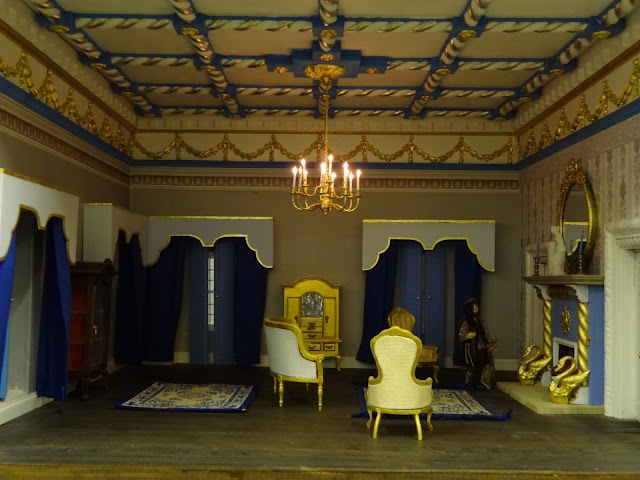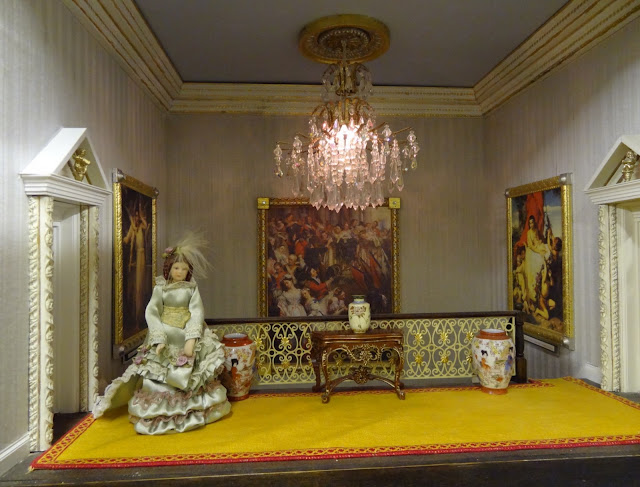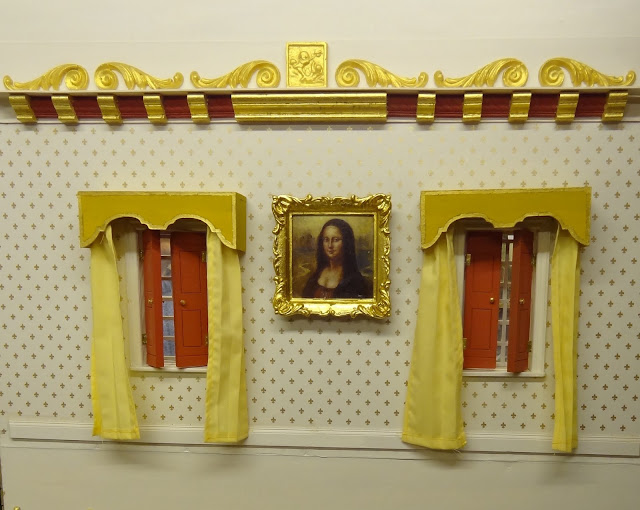Here at Hungerford Arcade, we have many interesting dealers with a story to tell. Frances and Alec Jones have a unit at the Arcade and told us that recently they put their house up for sale! So what! you may say. Ah ha, but, this is no ordinary house.
The house is in the village of Wootton Rivers, set in the beautiful Wiltshire countryside. The village has many wonderful thatched houses and cottages and even a lock keeper’s cottage. The one we are going to talk about is called the ‘Clock House’.
The Clock House is a beautiful Grade II listed building once owned by Jack Spratt, the scrap-heap clockmaker! The house was so-named when Jack made a clock which he put on the front of his house with only a ‘3’ and a ‘9’ on the dial. Above these was the word ‘Clock’ and below ‘House’. So called because he made beautiful clocks out of scrap. Jack loved clocks, they were his passion from a very young age. He taught himself clockmaking by repairing clocks and watches for his friends. He had beautiful clocks all around his house, including grandfather clocks all made by his own hands! The most famous of which is the Church clock.
To commemorate the coronation of George V in 1911, the villagers decided the Church should have a clock, but because of the expense, it was out of their reach! Jack Spratt then stepped forward and offered to make the clock for nothing provided the villagers supplied him with all the material that he would need to complete this huge undertaking. This they did by the cart load! Huge quantities of brass, lead, bedsteads, gunmetal, pipes, old shell casings from WWI and anything else they could lay their hands on!
The Church of St Andrew is, as are most village churches, a very tranquil place and because of the trees that surround it, is quite difficult to see from the road but can be clearly viewed from the railway bridge. Just follow the narrow path through the piers where, long ago, gates once hung and you will find yourself being taken back in time to a picture perfect churchyard surrounded by farm land, open countryside, beautiful bird song and the peace and quiet that we all so very much desire!
The Church is sought out by many visitors to the village. Looking up at the wooden belfry, they see the famous clock made by Jack Spratt. Apart from the enormous feat of making the clock out of scrap and bits and pieces this is no ordinary clock! The clock has three faces. Two are normal numeric faces but the third, instead of numbers has these words around it ‘GLORY BE TO GOD’.
In August,1931, not long before he died, Jack Spratt wrote a poem about his work.
“Where did you learn your trade?” hundreds asked of late, so here’s a short sketch of my doings to date.
The Scrap-heap Clockmaker of Wootton Rivers
In Wootton Rivers I have had a good spell,
Born here (1858), here I still dwell.
First thing I remember, sounds strange, still it’s true
We lived in a barn, that was when I was two.
‘Clock House’ was the school then, to it I was sent
Until I was 7, then to ploughing I went.
Later I went bird-scaring with an old gun,
Shot straight and soon taught birds our cornfields
to shun.
Met with an old watch with its ticking gone wrong,
‘Doctored’ it with my knife until it ticked strong.
Soon then I did all sorts of work on that farm,
To wake early I made the queerest alarm –
Made clock throw down a large tin bowl striking
four,
Which made a great noise as it rolled on the floor.
I liked farm life all right but ‘twas such small pay:
From 2d I’d rose to top – two bob a day.
E’en with that, last year there, I put seven pounds
by;
To save up a thousand I thought I would try.
When 20, to get more, to Maidenhead went,
In Nicholson’s brewery two years odd I spent;
From bottle washing there I rose to be clerk
But at that I saw I’d make no special mark.
My master gave me every chance to get on
But mechanic’s work my mind was set upon.
My mates brought me watches and clocks to put
right,
Of various sorts I thus got an insight.
While doing this evenings I thought out this plan –
I could be my own master as a ‘clock man’.
So I came back home in 1881;
Clock-watch work on my own I quickly begun,
Was soon known round this district wherever seen,
Had thousands of watches and clocks for to clean;
Any part of these I soon learned to repair,
Could turn a watch pivot as fine as a hair.
For years I did post-work just morning and night,
Had all day for other work – that did just right.
And soon I became sort of Jack of all trades,
The things I repaired were of all sorts and grades:
From delicate watch work to mowing machines
Or to making shuttles for sewing machines.
A piano part for harmonium I made
So that both together the two could be played.
Six public accounts were all once kept by me,
Wilts Club, Co-op, Pig Club, School, Rates,
Parish C.
For nigh 17 years I collected the rates
Then I gave that job up to one of our mates;
At one time I made music boxes to play,
Framed pictures, repaired windows too, at that day.
In 1911, at the king’s coronation,
We wanted a Church Clock in commemoration;
The cost seemed too great for spare £ s. d.
So I said “I’ll make one, from odds and ends, free.”
Some thought I was joking; I said “No, I’m not;
Let me have your scrap-heap stuff, any you’ve got.”
They seemed to be willing, so I made a start.
And chose what I wanted, each suitable part.
I wrote to a firm for wheels – got no reply;
That taught me on my own skill I must rely.
A plain 4-inch bed lathe without a slide rest
Was all the machinery I then possessed;
People gave me two large wheels nearly alike,
One did for the going side – one for the strike;
For all other wheels I made patterns of wood,
Got them cast in hard brass to make the job good;
The crudest contrivance (it still may be seen)
I rigged up to act as wheel-cutting machine,
With flat files I made round cutters of hard steel,
To cut all the teeth in each pinion and wheel;
Made division plates the blank wheels for to space
So that every tooth be exactly in place;
The steel pinions I made with spindles of bikes,
A sledgehammer hits the bell when the clock strikes.
On one of three dials is “Glory be to God”,
I used a broom handle for the pendulum rod;
It has 66 Ibs of lead for its bob,
My wife melted that and it was a hot job.
I made lots of tools by the aid of her fire,
Tempered drills and pinions that I did require.
From April thirty to August thirty-one
The clock was made, fixed up and everything done.
Its movement has never been taken apart,
Twenty years at its first stretch is not a bad start.
Our chimes are unique, every hour they are
changed,
Each chime tells the hour by being so arranged.
Folks say the church clock’s the masterpiece of all;
It may be – for brains and hands answered the call;
The brain work seemed easy, the hand work
somehow
Made great drops of sweat tumble off of my brow.
I got it to keep time by aid of the stars,
The fixed ones – not planets like Venus and Mars.
I’d seen no clock like it and did not quite know
If it would act right till I got it to go.
Reporters came down here from London by train
To take photos of it to make it quite plain
Of what it was made, and as to how it acts;
Some foreign papers also published the facts.
The Mayor of Wandsworth a silver medal sent,
Congratulations came from Kendal and Dent;
Some letters reached me from the United States,
Lots from unknown friends and a lot from my mates.
In ’13 I had a financial look round,
So I may as well mention just what I found.
Thirty years I’d worked nigh fourteen hours a day,
Often on one day I had earned two days pay;
Though earned like a horse, ‘twas not spent like an ass
For all my spare shillings to my bank did pass.
My earnings per year averaged nigh eighty pounds
And stored in the bank a fair nest egg I found:
My earnings with interest reached one five ought ought,
For saving or hard work I gave no more thought.
I’d earned all I wanted – a trifle to spare,
To save more seemed like wanting other folks’ share.
I’ve done just a few clocks for friends since that time,
But chiefly I’ve made clocks to play or to chime:
One hundred and fifty tunes one of them plays,
Hymns, songs, marches, God save the King,
Marseillaise,
There’s forty eight chimes, one each quarter all day,
And at each hour one of its tunes it will play.
Some shows sunrise, sunset and clock time at noon,
Date, day, month, and leap year and phases of moon;
There’s several specimens standing around
That are like pianos for volume of sound.
’s now my contemplation.
This rhyme I wrote in August one, nine, three one,
Jubilee of when ‘on my owFrom most of them each hour sweet harmony blends;
I’ve chiefly constructed them from odds and ends.
We show them with pleasure to people who call,
Clock House is well known by its clock on the wall.
Our bell barrel organ thirty tunes plays,
Our merry go round I made for fete days;
Our music chair amuses people a bit,
It plays a tune when on the seat people sit.
We never know what we can do till we try;
At failure I smile – ‘Try again, lad,’ says I.
Strong drink don’t suit, I drink milk with water in,
Smoking, gambling, horse racing I’d not begin;
To theatre, circus, cup-ties I’ve not been,
Pictures, talkies, kinemas I’ve not seen.
For such thing I have not the least interest,
Nature and machinery are things I like best.
Strolling round our country lanes I do enjoy,
Or round our old hill, as I did when a boy.
Our hospital twice has lengthened life for me,
Its box is here, white coins slip in easily.
I’ve enjoyed a long life and met many kind friends,
Small ailments now indicate long lives have ends.
I’ve been very happy in my occupation,
A sweet long rest comingn’ I begun.
The Wizard of Wootton, some folks call me that,
Some Scrap-heap Clockmaker, and some say
JACK SPRATT.
:
 |
Jack Spratt’s House
The Clock House. Wootton Rivers
Alec and Frances are lucky enough to own one of Jack Spratt’s clocks and they are going to leave it in the house when it is sold along with a framed, full page newspaper article about the life of Jack Spratt
|
 |
On the outside of dial ‘LIVE IN PEACE’
On the inside of dial ‘AVOID ALL WAR; |
 |
It is believed the clock was made for
someone named ‘CHIPS’ who lived in
Wootton Rivers |
 |
Around the Dial instead of numberals:
‘GLORY BE TO GOD’ |



































































